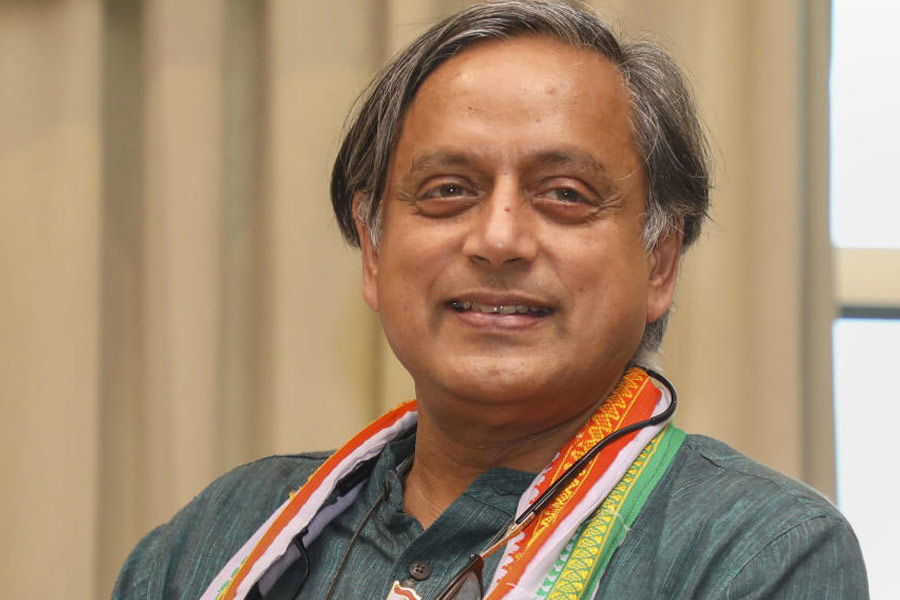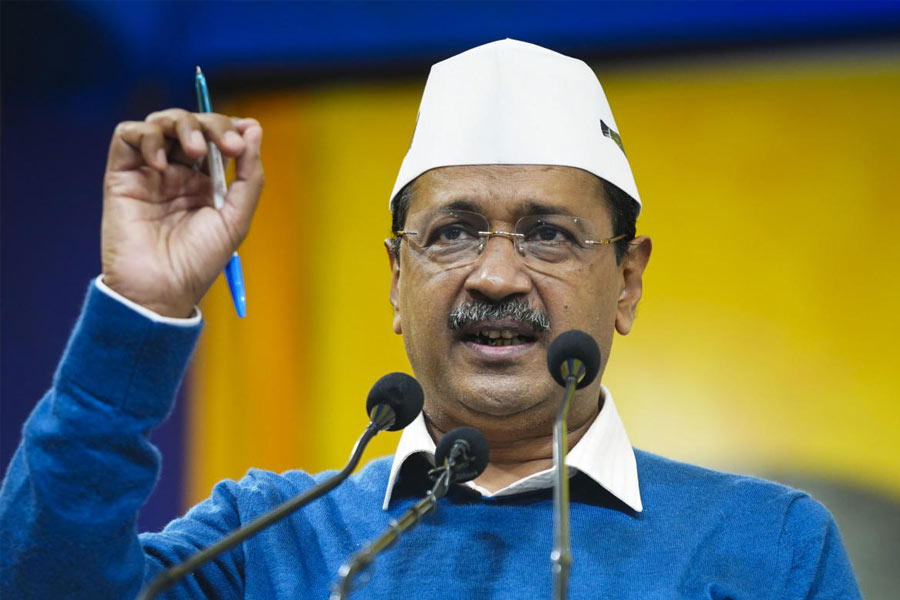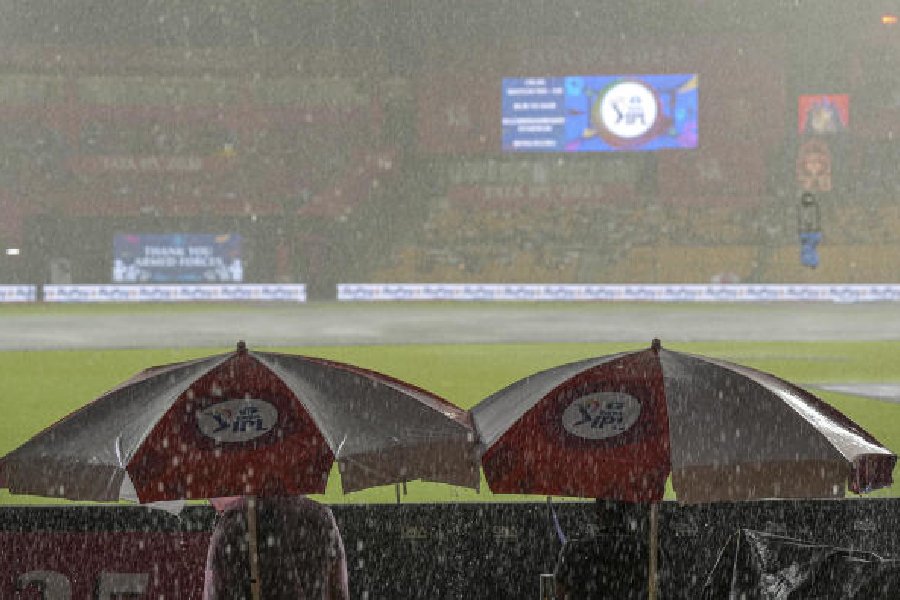 |
 |
 |
| (From top) A chef pounds meat with a Chinar tree trunk and Wazwan delicacies on offer at a city restaurant. Pictures by Rashbehari Das |
It hasn’t invaded Calcutta’s culinary culture in a way South Indian, Hyderabadi or even Rajasthani cuisine have. But Wazwan ? the traditional cuisine of Kashmir ? is slowly trickling into our gourmet bouquet, thanks to a couple of restaurants and a catering service that have been trying to perfect the art of this gourmet heritage.
Wazwan came to India with various Muslim invasions and was passed on to the Kashmiris. Ever since, the secrets of the tradition have been closely guarded by the wazas (people who specialise in Wazwan). And that perhaps is a reason why the cuisine hasn’t ever been much commercialised.
The other reason it has not found its way into city eateries is the long and cumbersome method of preparation. It takes days of planning and hours of preparation before the 36-course cuisine sees the light of the dining room.
“The method of preparation of Wazwan is too long and tedious. Moreover, for authentic Wazwan, one cannot use electric equipment, it’s all done manually,’ says Shanker Kaul, a Kashmiri pandit who runs an only-Wazwan catering service in the city called Bouin.
Kaul elaborates: “For instance, if you want to cook Gushtaba ? a Kashmiri equivalent of kofta ? for dinner, the preparations must ideally start from the morning. The mutton has to be pounded for minimum five hours. And you can’t use an electric blender for any of the dishes because it would rob the meat of moisture.” The meat, the mainstay of Wazwan, is pounded with the trunk of the Chinar tree, available only in the Valley.
Like all Muslim cuisine, kebabs occupy a prominent place in Wazwan too. But the method of preparation for the succulent kebabs like Seekh Kebab and Lahabi Kebab differs from the tandoori way of making them.
“In Wazwan, kebabs are only cooked over charcoal fire. And only unadulterated minced meat is used, to make the kebabs juicy. But in other varieties, even the five-star hotels add gram flour to their meat, which makes the kebabs dry,” explains Anju Munshi, cookery exponent and author of Healthy and Delightful Kashmiri Cooking.
In this section, the delicacy is the Kanti Kebab, which is consumed as a snack along with tea. These are prepared by frying tender meat with onions and the medium of cooking used is mustard oil. Some other Wazwan delicacies include Korma Rogan Josh, Rista, Paneer-e-Dum and Tabak Maaz.
“The weather of Kashmir is conducive to consumption of flavours like chilli powder, onions, ginger, garlic and aniseed powder and hence the cuisine uses them liberally,” adds Munshi. However, the Kashmiri pandits avoid the use of onions and garlic as they consider these to be aphrodisiacs.
Other ingredients used generously in Wazwan are mouli flower that lends colour to the food and yoghurt that provides the tangy taste.
“Apart from using pastes and powders as added flavour, tomato, ginger, onion and garlic are considered vegetables in Wazwan and so these are used independently as well,” reveals Soma Sharma, proprietor of Pakwan, a restaurant on Purna Das Road that offers this cuisine.
“The way Kashmiris have a Wazwan meal is very interesting. It stems from their belief that a family that eats together always stays together,” adds Munshi. A meal for six is served in a taram, a six-chambered utensil . The rice and kebabs are savoured first and the Gushtaba is served at the end. A bowl of dry fruit-rich firni is the dessert.
The meal is followed up with a cup of Sheer Chai (salt tea) prepared with lots of cinnamon and cardamom, which is believed to aid digestion of the heavy meal.










